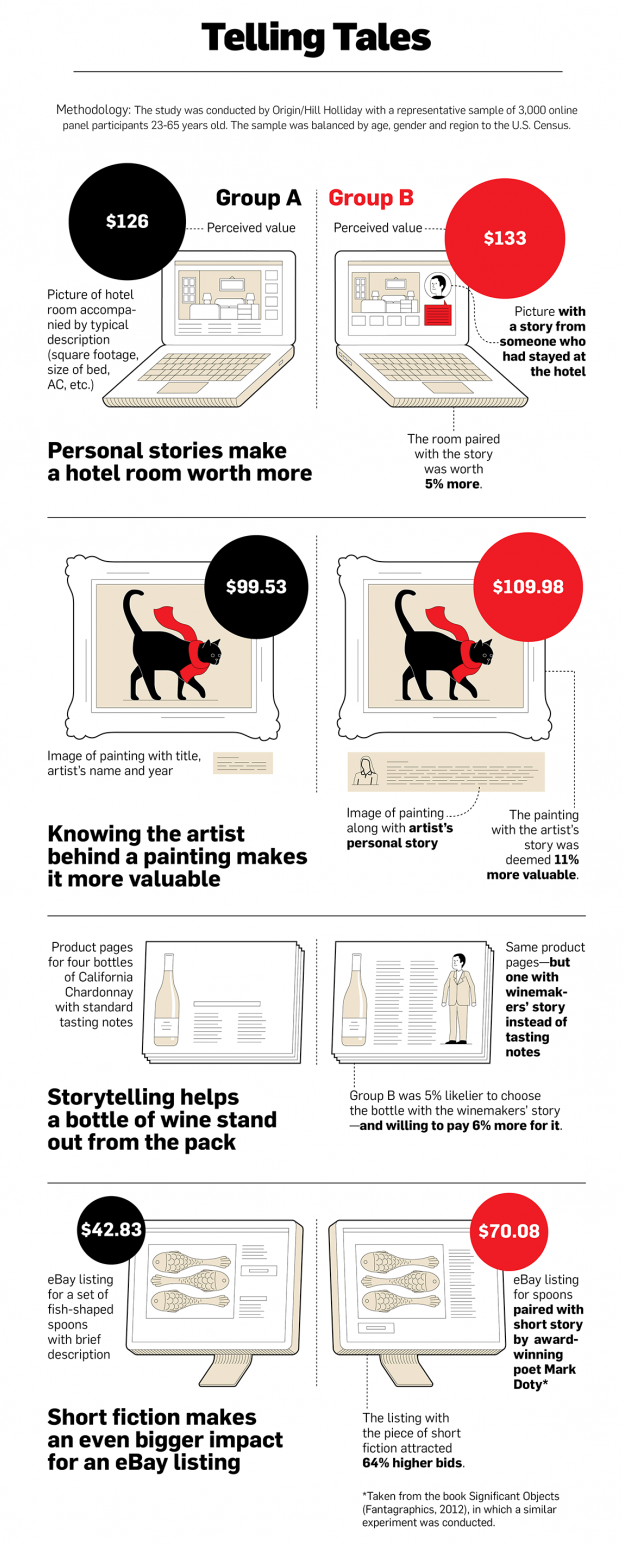Storytelling Is the Best Bridge Between Customers and Solutions
Storytelling Is the Best Bridge Between Customers and Solutions

Once Upon a Sales Deck
Salespeople want to sell. This much we know. Often, in our conversations with clients or in our perusing of sales decks, we hear a similar refrain. How do we cut to the chase and get to the meat? We don’t blame them. In today’s millennial-influenced age of purpose, you could sit through a narrative, a manifesto, a history lesson, a personal testimony, and a video on corporate social responsibility all before learning what someone is actually selling you.
That’s the balancing act. You’re only as strong as your story—but if your story goes on too long, meanders, or doesn’t naturally bridge to your solutions, people will read something else. When done properly, a story is the shortest distance between what your brand does and why people should care.
The Cost of Confessionals
Consider this study conducted by Origin/Hill Holliday. They asked 3,000 online panel participants between the ages of 23 and 65 about the perceived value of various listings. In every case, the addition of a story—whether it’s from a customer, an origin story, or even short fiction—increased the value, sometimes up to 64 percent!

We hate unnecessary front-matter in sales decks more than anyone. But when you look at the numbers, it becomes clear that storytelling isn’t trite, it’s a trenchant tool. In a short amount of space, stories can do the heavy lifting of connecting your vision to your portfolio. As much as you might want to dive directly into the organizational prowess of your cloud infrastructure, it’s worth pausing to discuss the transformational outcomes of your product. What happens when everything works like it’s supposed to? Picture the worst day of your customer’s life—how does their experience change when they interact with your brand?
In a Crowded Marketplace, Far, Far Away …
Take the stylish and digitally-minded luggage brand Away. In an incredibly crowded marketplace, they’ve been able to differentiate themselves through their sleek design, cost transparency, and use of storytelling to elevate their solutions. Their blog isn’t about the intricacies of wheel design—it’s a travel magazine designed to activate your wanderlust. (And then, of course, buy their products.) As they say in their narrative, “If you’re looking down at your dying phone and broken bag, you can’t see up, out, and ahead to the world in front of you.”
By using storytelling to articulate the highest possible value, they take the customer on a journey from product to benefit. A feature is what your product does; a benefit is what the customer can do with your product. As goes the saying, people don’t buy features, they buy better versions of themselves.
This is in no way limited to B2C—B2B brands can be emotive, and should be. According to research by Google in partnership with Motista and CEB, 50% of B2B buyers are more likely to buy if they can connect emotionally with your brand. It starts with your goals, objectives, mission, and vision. But beyond that, it’s being able to communicate the professional, social, and emotional benefits one experiences in addition to the actual product. Storytelling can go a long way in bridging that gap.
The most important thing to remember in crafting your story is authenticity. Away sells luggage, they tell travel stories. Lenovo sells computers, they tell stories about people doing innovative things with computers. “When authenticity is put forward as the priority,” says Taj Forer, Co-founder & CEO of fabl, “the emotive stories will generate themselves as the organic byproduct.” In other words, you’re not allowed to airlift some emotional story into your brand if it doesn’t make sense.
Equipping your sales team with the right library of emotive stories gives them even more arrows in their quiver. So, they can do what they do best: sell.
Emotive Brand is a San Francisco brand strategy and design agency.







